
All categories
Featured selections
Trade Assurance
Buyer Central
Help Center
Get the app
Become a supplier

(5589 products available)







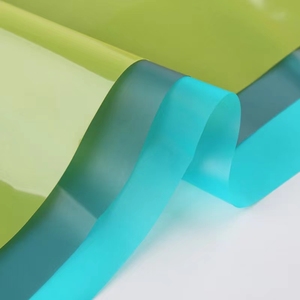
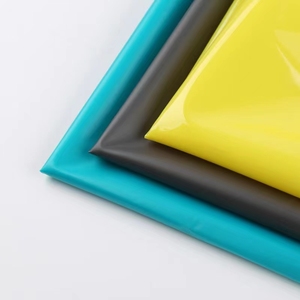
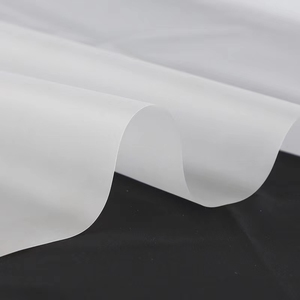

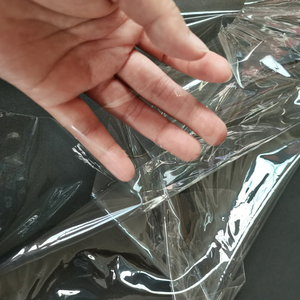

















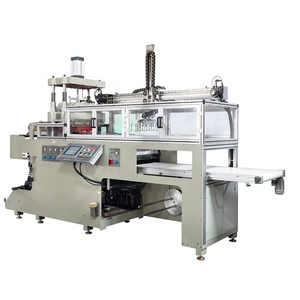
















Thermoplastic polymers exist in various categories. Here, they include the following types:
Polyethylene (PE)
Usually, polyethylene is the most common thermoplastic polymer in the universe. Normally, it is manufactured in varying densities – low-density polyethylene (LDPE) and high-density polyethylene (HDPE). Conventionally, LDPE is notable for its flexibility and toughness. Habitually, it is used in packaging, plastic bags, and containers. Conversely, HDPE is rigid and puncture-resistant. Normally, it is used in bottles, pipes, and industrial containers.
Polypropylene (PP)
Usually, polypropylene is a versatile thermoplastic polymer. This property makes it suitable for varied applications. Regularly, it is used in packaging, automotive parts, and household goods. Commonly, the material's endurance to chemicals and solvents makes it appropriate for food containers and medical products.
Polyvinyl Chloride (PVC)
Conventionally, polyvinyl chloride is a widely used synthetic thermoplastic polymer. It is mostly utilized in construction and electrical applications. It owes its durability and versatility to rigidity and weather resistance. This makes it suitable for pipes, window frames, and electrical wiring insulation. This polymer can be flexible or rigid. This flexibility is achieved by incorporating plasticizers for applications requiring softer materials such as credit cards and medical packaging.
Polystyrene (PS)
Standardly, polystyrene is an affordable thermoplastic renowned for its versatility. Often, it can be solid or foamed. The solid form is applied in containers, toys, and appliances. On the other hand, the foamed version is popular in insulation materials and disposable cutlery. Polystyrene's ease of manufacture and polymerization make it a staple in diverse industries.
Thermoplastic Elastomers (TPE)
Customarily, thermoplastic elastomers are a unique blend of rubber-like materials and thermoplastics. They are commonly utilized where flexibility and durability are vital. Typically, TPEs are found in automotive parts, consumer goods, and medical devices. This is due to their capacity for enduring varied temperatures and deformations.
Acrylonitrile Butadiene Styrene (ABS)
Acrylonitrile butadiene styrene is a copolymer renowned for its toughness and impact resistance. This makes it valuable in consumer electronics, automotive components, and construction materials. The polymerization process involved in ABS yields a stable and durable material suitable for diverse applications requiring strength and aesthetics.
Usually, thermoplastic polymers exhibit multiple features. These include:
High Molecular Weights
Commonly, thermoplastic polymers are characterized by elevated molecular weights. This contributes to their notable mechanical properties. Additionally, the high molecular weights lead to elongated polymer chains. This enhances tensile strength and elasticity in varying applications.
Melting and Softening
Often, these polymers have the ability to melt and soften upon application of heat. This allows for processing and reshaping. Therefore, this property makes them adaptable for manufacturing processes such as injection molding, extrusion, and thermoforming. Henceforth, this offers convenience in production and recycling.
Chemical Resistance
Regularly, thermoplastic polymers possess resistance to a wide array of chemicals. Usually, they include acids, bases, and organic solvents. In addition, this chemical stability is vital in diverse fields. They include the pharmaceutical, automotive, and construction industries. Standardly, it aids in prolonging the lifespan of products exposed to hazardous substances.
Thermal Stability
Customarily, these polymers maintain structural integrity when subjected to varying temperatures. This is particularly significant in applications that experience heat. Additionally, for instance, in automotive components or electrical insulators. In such settings, this thermal stability prevents degradation. This ensures reliable performance over an extended duration.
Biocompatibility
Occasionally, a subset of thermoplastic polymers is developed with biocompatibility. This makes them suitable for medical applications. For instance, devices or implants. Moreover, these biocompatible polymers elicit minimal adverse reactions when they come into contact with living tissues. This feature makes them indispensable in health care settings.
Varying Mechanical Properties
Often, these polymers exhibit an extensive range of mechanical properties. These may include elasticity, impact resistance, and tensile strength. Therefore, this variability enables the selection of specific thermoplastics. This will depend on the requirements of diverse applications. Additionally, it ensures that falling products meet performance standards. Also, it includes durability and safety.
Thermoplastic polymer finds multiple applications. Here they are:
Automotive Industry
Thermoplastic polymers are widely applied in the automotive industry. This is due to their exceptional durability, lightweight, and flexibility. Conspicuously, these materials are used to manufacture exterior and interior components. These include bumpers, dashboards, and door panels. Therefore, the utilization of thermoplastics helps improve fuel efficiency. Consequently, this leads to reduced vehicle weight without compromising safety.
Medical Devices
Usually, folks prefer these polymers in manufacturing medical devices due to their biocompatibility and ease of sterilization. For instance, they create syringes, implants, and prosthetic devices. This polymer type can be molded into complex shapes. This allows for the development of devices that closely match anatomical structures. Also, they maintain their strength and flexibility over a long time.
Packaging Materials
Habitually, thermoplastic polymers play a crucial role in the packaging industry. This is particularly in food packaging and consumer products. Normally, polymers like polyethylene and polypropylene provide barriers against moisture, oxygen, and UV radiation. This aids in enhancing product freshness and extending shelf life. In addition, their lightweight and user-friendly features make them highly suitable for developing recyclable and sustainable packaging solutions.
Electronics
Regularly, these polymers form a crucial component in the electronics industry. This is due to their electrical insulation properties and adaptability in design. Customarily, they are used to produce casings, connectors, and circuit boards. Commonly, ABS and polycarbonate are notable for their durability and heat resistance. Normally, these features are indispensable in producing devices that will continually exert close heat exposure.
Consumer Goods
Ideally, these polymers are widely utilized in manufacturing consumer goods. These items include appliances, toys, and household items. Particularly, the appeal of these materials stems from their ability to be repeatedly molded and recycled. This promotes sustainability. Therefore, their aesthetic and functional qualities make them prominent selections in product designs for varied industries.
When selecting a thermoplastic polymer for manufacturing or other crucial uses, business owners need to consider several factors. Here are some of them:
Mechanical properties
Different thermoplastic polymers have diverse mechanical properties. For instance, tensile strength and modulus of elasticity suitable for various tasks. If the business targets a task that requires high strength, durable materials, such as frames and structural components, it should settle for ABS, polycarbonate, or polyamide. At the same time, materials such as polyetherimide and nylon possess good elongation and tensile, making them suitable for manufacturing goods. Moreover, polymers such as Polymethyl Methacrylate and nylon-6,6 have high-impact resistance. Hence, they can be used to manufacture products that require long-term use.
Thermal properties
Every thermoplastic polymer has a specific temperature range in which it can be practically used. Therefore, business owners should ensure they get a material that can endure the required temperature. For example, polyethylene is ideal for low temperatures, while polycarbonate and polyphenylene can be used in high-end applications that require a material that can withstand high temperatures.
Chemical environment
In most cases, thermoplastics are likely to be exposed to different chemicals, especially in manufacturing. Therefore, business owners should look for a material that can withstand chemicals used in making manufactured goods. For instance, polypropylene is resistant to caustic chemicals, while fluoropolymers are resistant to solvents and acidic chemicals.
Processing requirements
Ideally, thermoplastics commonly differ in their melting temperatures. Due to this, some are easier to fabricate than others. Hence, when selecting a polymer, bear in mind the manufacturing method. For example, injection molding and 3D printing require different materials. So, ensure the thermoplastic matches the production technique intended.
Application-specific requirements
Business owners should also consider the specific features needed for certain applications. For instance, polycarbonate is suitable for windows and safety glasses due to its high transparency and optical clarity. At the same time, polyether ether ketone is ideal for electrical components, automobile parts, and aerospace applications, as it can withstand extreme conditions.
The good thing about plastics coverings is that they do not require a lot of maintenance to stay in good condition. To begin with, one ought to wash the surface regularly using warm water and a mild detergent. Avoid using chemicals that are likely to damage the surface finish or affect the material's properties. In addition, donning a thermoplastic cover is resistant to many forms of damage, but sharp objects might scratch it. Therefore, one should carefully check the surface for any cuts or dents before and after use. If there are any, ensure they are fixed. Also, to enhance durability, it's essential to store the polymer in a location with low exposure to heat, dust, or high humidity.
Yes, some modern thermoplastic materials can be manufactured in an eco-friendly manner. This is especially when using bio-based materials or recycled feedstock. Moreover, the recyclability of some thermoplastics also contributes to their sustainability.
Buyers can educate themselves on various tips to prolong the lifespan of thermoplastics. To begin with, they should expose the material to weather, especially the sun, for long hours. In addition, they should regularly wash the surface using warm water and a mild detergent. Also, they should avoid placing hot items directly onto the polymer surface.
First, as mentioned previously, a business owner should choose a thermoplastic that meets the requirements for the intended use. Therefore, they should consider the thermal and chemical resistance of various materials. In addition, they should look for polymers with high tensile strength, elongation, and impact resistance. They can settle for polymers such as polycarbonate, polypropylene, and nylon-6,6. Moreover, opting for reinforced variants of these thermoplastics can further enhance durability.